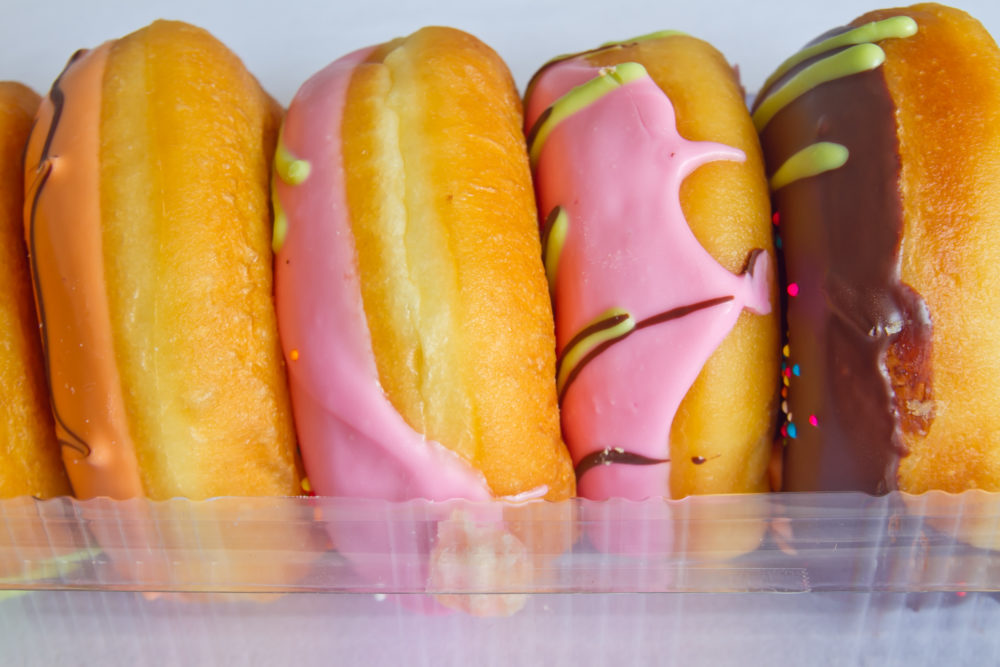Like high-volume bread and bun lines, high-capacity donut lines are designed to run one product for a long stretch of time. However, consumer demand has donut producers pursuing more flexible production lines that can make a lot of different products at once. This requires quick changes in tooling equipment and settings from makeup through proofing.
“The biggest challenge we’re faced with is developing high-capacity systems for a wide variety of products,” said David Moline, vice-president, sales and marketing, Moline Machinery. “Having a system on the makeup side that has the flexibility to make a wide variety of products is key.”
Often on a donut line, flexibility looks like proper tooling to cut the dough into different shapes as well as extra modular pieces such as cinnamon dispensers and automated curlers for products like honey buns. Moline Machinery’s Transpositor cuts honey buns and loads the proofers at high speeds while still accommodating for adjustments made at the proofer.
Changeovers, however, may create product loss or slow down production. To prevent or minimize these issues, Rademaker designed its makeup equipment with a unique fit tooling philosophy.
“This concept guarantees the position of the tools on the table during the changeover to allow the operators to perform the switch quicker, resulting in less material loss and greater product yield,” said Nick Magistrelli, vice-president of sales, Rademaker USA.
Tools are only designed and manufactured to attach on the line the correct way to prevent operator mistakes.
Donut production requires heavily integrated processing systems that work together to create consistent and quality yeast-raised donuts. With the latest technology in controls and automation, donut bakers can create the perfect environments to develop high-quality donuts at high throughputs.
This article is an excerpt from the November 2019 issue of Baking & Snack. To read the entire feature on donuts, click here.





